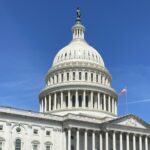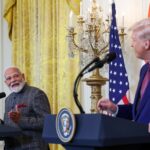U.S. President Donald Trump’s shock move to impose a $100,000 annual fee on H-1B visas could end up triggering an unintended consequence: reversing the decades-long outflow of Indian talent and spurring innovation at home.
While the proclamation signed on September 19 rattled Indian IT companies and aspiring migrants, industry leaders and policymakers are framing it as a potential inflection point.
“America will choke its own innovation while India turbocharges its own,” former NITI Aayog chief Amitabh Kant wrote on X, arguing that research labs and startups will now mushroom in Bengaluru, Hyderabad, and Pune rather than in Silicon Valley.
Indians accounted for 71 per cent of all H-1B approvals last year. With the new fee rendering onsite placements prohibitively expensive, analysts expect Indian IT firms to pivot harder towards Global Capability Centers (GCCs) and offshore delivery models. For U.S. clients, one $100,000 visa could instead fund four to five high-quality engineers in India — a cost arbitrage that may accelerate the growth of India’s $200 billion tech services sector.
“This is the tipping point for India’s digital economy,” said a senior executive at NASSCOM. “If harnessed correctly, the disruption can strengthen India’s role as the world’s technology hub.”
The shift could also help India retain its brightest minds. For years, the U.S. has been the magnet for STEM graduates from India’s IITs and top universities. Now, with barriers rising, more graduates may stay back, bolstering India’s startup ecosystem, which already houses over 100 unicorns. Venture investors argue that the policy shock could deepen India’s talent pool and redirect capital into homegrown innovation.
Social media reflected this split mood. While many Indians expressed panic over lost opportunities abroad, a sizeable minority hailed the move as a “blessing in disguise.” “This is the end of brain drain,” one post declared. Another noted: “With $100,000, you can hire four engineers in India — Trump just outsourced jobs to us.”
Yet turning this into a structural advantage will require India to act quickly. Experts warn that without reforms — higher R&D spending, stronger infrastructure in tech hubs, and a more predictable regulatory climate — talent may instead move to Canada, Europe, or Singapore. “This is not an automatic win for India,” said an economist at a New Delhi think tank. “It’s a window of opportunity that must be seized.”
The government has so far refrained from a sharp diplomatic reaction, but officials say the policy could align with India’s ambition to become a $1 trillion digital economy by 2030. Industry bodies are lobbying for tax incentives and faster approvals for GCCs to anchor returning talent and corporate investment.
For now, Trump’s $100,000 visa fee has turned the once-coveted H-1B from a gateway to the American dream into a catalyst for India’s own tech future. Whether New Delhi can convert the disruption into lasting advantage will depend less on Washington’s actions and more on how India retools its innovation ecosystem at home.


![h1b visa[1].jpg](https://southasianherald.com/wp-content/uploads/2025/09/h1b-visa1.jpg-1170x655.jpeg)



